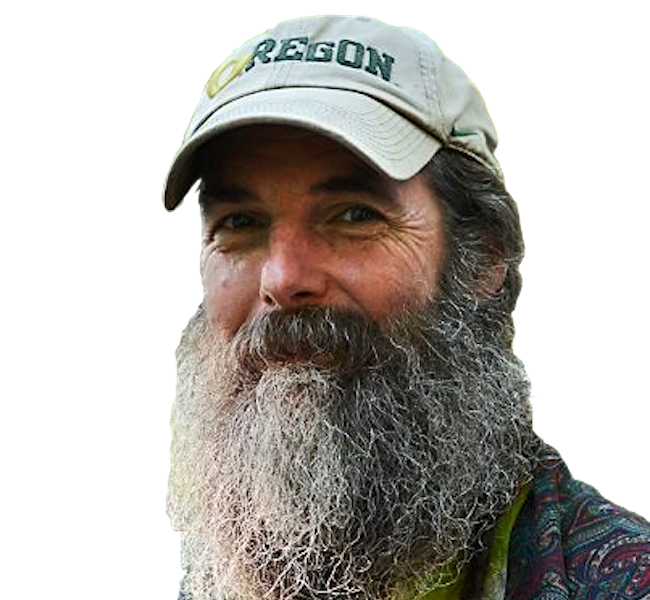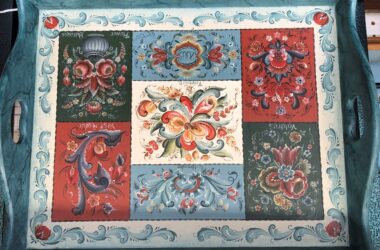 Merryday
Merryday
I might have bitten off more than I can chew in attempting to tell the story of Mt. David in three parts but I am going to try to cover a lot of ground this week, even at the risk of oversimplifying a very complex set of events. Let me apologize in advance if I leave out important details or misstate some of the issues.
As a point of clarification in this week’s column I will be talking about two separate pieces of land. The first was and is held by the Emerald Heights LLC development group. It is 63 acres, comprising most of what is considered Mt. David proper, and is the land that has been discussed in the past two columns. The second parcel is 78 acres and lies to the west of Emerald Heights. It is owned by the Sunrise Ridge LLC.
The Friends of Mt. David (FOMD) was inspired to try and secure the bulk of Mt. David and preserve it as park and open space. In November 1997 they had a town meeting at City Hall to assess the public interest. The group put out a regular newsletter, organized, and asked for members to commit financial pledges and to contribute their skills to the effort. They started attending City Council meetings regularly and pushed for changes in the 1974 Parks and Recreation Plan.
Support for acquiring the land got a boost when developer Fred Brown put it up for auction again, this time at $495,000. The group borrowed and modified Rev. Olsen’s oil approach by offering stock certificates. FOMD leaders figured if it worked in the 1920s, and the town bought in, they might pay to preserve and own a natural treasure. Don Nordin kept Mt. David’s issues alive by running for public offices, including city councilor and mayor.
Several stars aligned around the dea of purchasing Mt. David. One was Oregon Measure 66 which provided $5 million in local share grants for land acquisition. Another was the City’s leadership expressing an interest in supporting the move. In addition, FOMD had been reaching out to Trust for Public Lands (TPL), a national nonprofit that helps public entities purchase land for parks and open space. They would help put together money for the purchase. One of the sources the City sought was a $220,000 grant through Measure 66.
The City Council passed a resolution on Dec. 13, 1999, expressing interest in purchasing the Mt. David property and partnering with the TPL in this venture. This was conditional on receiving the money from Measure 66. When the news reached the City that the project had missed the cut by three projects on getting funded, plans cooled. There wasn’t money in the budget to purchase the hill without the help of the grants. According to Nordin, “The City lost interest when they didn’t get the money. We urged them to reapply for the grant, but it didn’t happen.”
Then in April 2000, there was a renewed charge for the City to invest acquiring Mt. David, led by new City Councilor Krista Wamhoff. The plan would require shifting money from other park projects, like the paving of the Row River Trail, borrowing $138,000, and successfully reapplying for the Measure 66 grant. This spurred the FOMD to renew its efforts to secure money and it was again joined by the TPL in assisting. Ultimately the effort was not successful, money being the issue.
The next move in the game came in July 2001, and effectively ended the FOMD’s dream of securing it for future generations. The property had been sold to an investment group including local realtor David Hemenway. The group said it would proceed slowly with a small group of houses.
There were challenges that faced anyone wishing to develop Mt. David. Since it lies outside the city limits it would need to be annexed to receive city water and sewer services, and also be rezoned. And since there were some considerably steep slopes on the hill the process of putting roads in there would be expensive and require lots of studies and engineering. Some areas on Mt. David have potential for rapidly moving landslide hazards, effectively making it unbuildable. City water pressure would not be able to service the houses above a certain elevation, another challenge to solve.
Mt. David presented a paradox for city leaders. The Urban Growth Boundary (UGB) that surrounds each Oregon municipality is a result of the 1973 Senate Bill 100 sought to preserve valuable agricultural, forest, and open space. By concentrating development density into urban areas, these essential resources would not be lost to sprawl. The City is required by law to maintain a 20-year supply of buildable lands. Mt. David lies in Cottage Grove’s UGB, and if it was locked into park space it would affect the inventory. And while Cottage Grove faced a housing shortage, development costs on Mt. David would preclude any affordable housing to match that need. The City’s Comprehensive Development Plan (last amended in 2008) would guide any development that would come to Mt. David.
In 2005 folks in the NWN and fans of Mt. David in general were shocked by a double whammy. In February trees along the ridgeline of the 63 acres of Emerald Heights were being cut down. Then they were blindsided to learn of plans for building 253 homes on the 78-acre parcel to the west of the Emerald Heights tract. Some didn’t consider it part of Mt. David proper but it certainly caught a lot of Cottage Grovers off guard.
Cathy Bellavita first heard about the issue from a letter to the editor in the local paper written by Lara Florez advising the community of the news. The former FOMD had drifted into inactivity. That’s what happens in a group as people move away, get affected by illness or aging, or priorities change for its members. Now that there were two possible developments happening up on the hill, some former members got back involved and attracted new blood.
What it would mean to the surrounding neighborhoods by adding up to 500 new dwellings on the hill?
While city planning encouraged citizen participation, the complexities of laws and policies made it difficult to understand and engage in the process. Early in the new FOMD group it was realized that they would need legal help. Much of their fundraising efforts, which included T-shirts, a cookbook, garage sales, and donation solicitations, went to hire attorney Jan Wilson to help FOMD address the group’s three key concerns: neighborhood traffic, hillside development, and preserving open space.
The new FOMD group specifically chose to not take a stand on possible developments, but rather was focused on how the development would affect their quality of life. Some other activities the group took on was the Highway Litter pickup around the exit 174 section of I-5 and attempting to place the NWN on the National Register of Historic Places.
In 2009 this effort eventually failed due to opposition raised by real-estate interests, much to the surprise of one of the leaders of move, Becky Venice. “The big worry is to keep this a nice neighborhood, I thought everyone was on board,” she said.
Sunrise Ridge Developer Todd Albert had also worked on completing Phase 2 of the Hidden Valley Estates, by the same named golf course. He surprised the residents there by planning on connecting their private road, Holly Avenue, to the planned Sunrise Ridge as a means to access that development. Their homeowners’ association became involved in the question, decidedly not in favor of routing traffic through their enclave.
Since Sunrise Ridge was being pursued as a planned unit development (PUD), different legal procedures and schedules were put into play. Developers such as Albert had realized small rural communities such Cottage Grove were often unprepared for the sudden plans for a large development. For example the Comprehensive Land Use Plan hadn’t been updated for 12 years and the Traffic Survey Plan didn’t meet current state standards.
Just before the final public hearing on Albert’s PUD before City of Cottage Grove’s City Council, his attorney filed a petition for a Writ of Mandamus, claiming the City had violated the 120-day limit on his PUD application. This took away the decision from the City and its citizens, putting it into the hands of the Circuit Court. Immediately after this action he moved in with bulldozers and began preparing the land for his development.
FOMD fought back in court and in March 2006 and won some concessions, including a 27-item Conditions of Approval of the project through a stipulated judgment.
While the courts sorted out the conflicting issues, the economic situation was again creeping toward another downturn. In 2007 the housing bubble burst and the country slid into a recession. By 2011 Albert had few completed houses to show for his efforts but a sizable bill with Lane County for property taxes owed. The issue was eventually resolved.
Phase 1 of Sunrise is mostly built. Phase 2 was approved in May 2019, but no development schedule is known. The main piece of Mt. David still sits undeveloped and the plans of Emerald Heights LLC are unknown.
FOMD still has dreams of helping shape the fate of its beloved hill. One is an interpretive Ridgeline Trail that follows the property lines of the two parcels and showcases the historic panoramas, oil well site, and walking trails to the McFarland Cemetery.
Another wish is to preserve as much of the steep undevelopable parts of the hill as open space and protect as much natural habitat as possible in keeping with the long tradition of Mt. David’s role in the community.
Email: [email protected]







